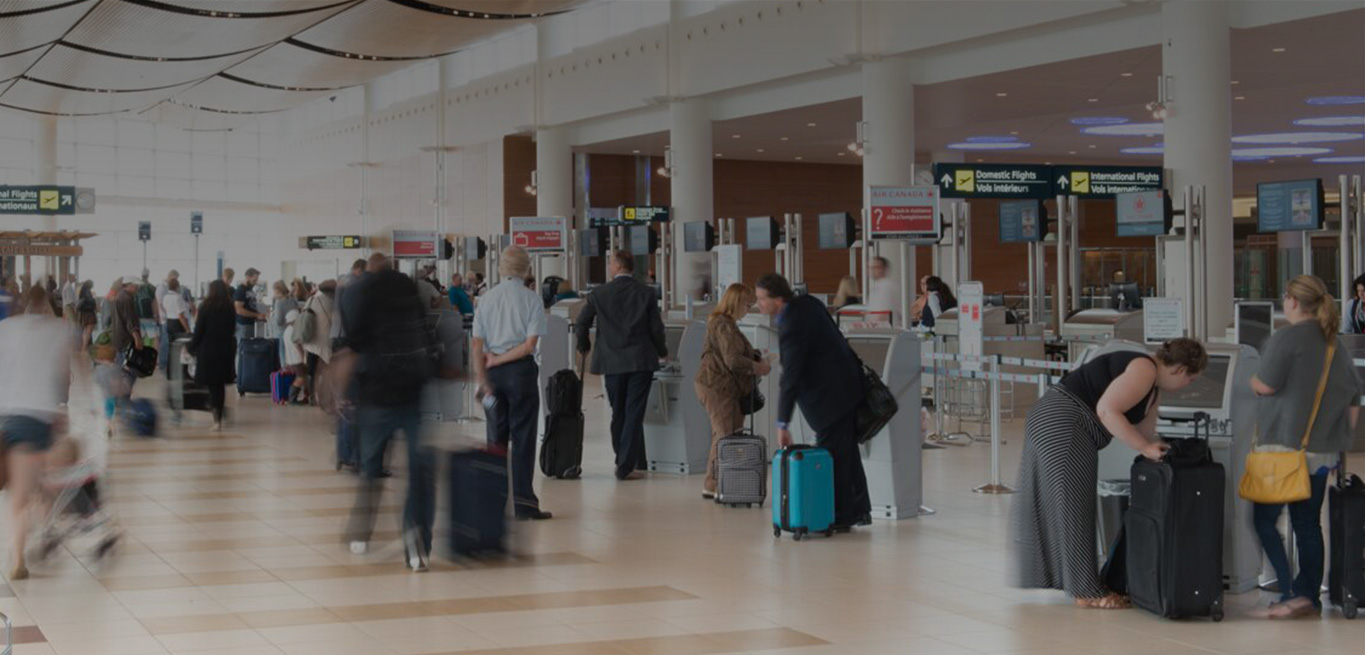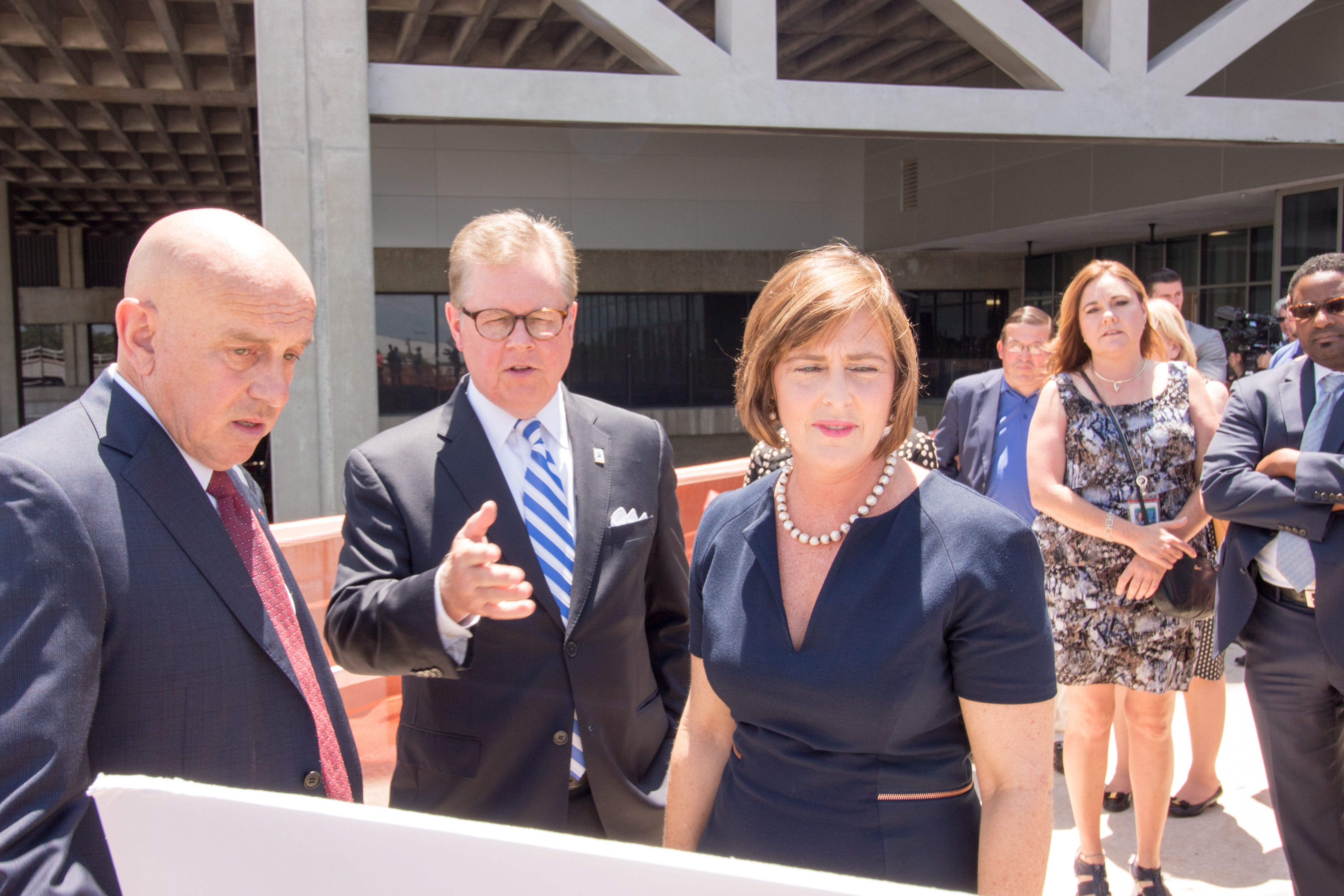Passenger numbers are expected to double by 2035.
IoT queue measurement technology enables airports to keep waiting times from growing.
By Marc Rauch, Xovis
The airport industry stays on the rise, while a capacity crisis is on the horizon. The International Air Transport Association (IATA) expects 7.2 billion passengers to travel in 2035, almost twice as much as today.
As many airports are landlocked and can’t just go bigger, the climbing passenger numbers further complicate the fight against long queues and waiting times. Already today, passengers at major US airports sometimes have to slog through a queue for over an hour. As a result, passengers spend less: according to an industry survey, an extra 10 minutes spent in a queue at security reduces a passenger’s spending on retail by 30 percent. How can airports prevent queues and waiting times from growing along with passenger numbers? Is there a way to streamline passenger flows within existing capacities to increase both passenger satisfaction and revenues?
REAL-TIME DATA AGAINST WAITING TIMES
There is good news: queue and passenger flow measurement technologies pave the way for preventing queues from building up and frustrating passengers. Not surprisingly, RFPs for queue measurement systems have been sprouting lately. More and more North-American airports count on robust real-time data from an IoT system with 3D sensors and software solutions: Ceiling-mounted 3D sensors count and track all passengers anonymously. The software receives data streams from the sensors and calculates the KPIs such as queue lengths, waiting times, process times and passenger throughput. The real-time data can be accessed by airport staff members and shared with passengers.
MSP: SMOOTH OPERATIONS AFTER SUPER BOWL LII
As the host airport for Super Bowl LII, Minneapolis-St. Paul International Airport (MSP) pleasantly surprised passengers with shorter than expected waiting times the Monday after the Super Bowl. The airport broke its single-day record up to that time for the number of passengers screened, with 60,455 passengers going through its security checkpoints. This was nearly double the airport’s average day and well above the 40,000-plus that are screened daily during the busy spring break period.
3D sensors at security checkpoints helped smooth operations, measuring queue length, waiting time, and process time per security lane as well as other KPIs. “We aim to create a seamless passenger experience, using passenger flow technology to link together every touchpoint of the departure lobby area, the checkpoint locations, and all the way to the gate,” said Eduardo Valencia, Vice President, Chief Information Officer at Metropolitan Airports Commission, which operates MSP and six general aviation airports.
“The real-time data the sensors provide is shared with all of the stakeholders and helps the Transportation Security Administration manage its security lines more efficiently,” said Phil Burke, Director of MSP Operations for the Metropolitan Airports Commission. “The system is also useful to passengers, who can choose the shortest lines based on wait times displayed on digital signs in the departure lobbies.”
MSP is one of four US airports that process more than 38 million passengers per year and count on a combination of 3D sensors and software solutions. Many more US airports and authorities are currently conducting trials to find the right queue and passenger flow measurement system.
THE DIGITAL TRANSFORMATION OF PASSENGER FLOWS AND QUEUES
Some airports are using tracking systems to help with passenger flows and queues. IoT systems in particular, combined with 3D sensors and software solutions measure KPIs such as waiting times, process times and passenger throughput. For example, Swissbased Xovis has equipped 352 sites (from check-in to gates, and from gates to taxi ranks) at 66 international airports with the Xovis Passenger Tracking System (PTS). Airport operators around the globe also use this system to monitor the fulfilment of Service Level Agreements (SLAs) and to compare standard and new processes at security checkpoints (e.g. automated vs. conventional screening).
At landlocked Dubai International Airport (DXB), the third largest airport in the world, over 5,000 staff members use the data on their mobile phones and tablets to react upon identified bottlenecks. If the waiting time in a certain area exceeds a defined threshold, the team is alerted and can send more staff members and open more counters. DXB has reduced waiting times by a remarkable 10 per cent during the first three months of 2017. “This automated system provides us with timelier and more accurate data more quickly than the manual system that was used previously. As a result, the operations team and other organizations that work across the airport now have a bird’s eye view of bottlenecks, allowing them to better manage staffing levels and lanes, and improve the overall customer experience. We have more work to do in this area, but we are pleased with progress to date,” said Frank McCrorie, Senior Vice President of Operations at DXB.
BENEFITS FOR ALL AIRPORT STAKEHOLDERS
Smaller airports also aim at streamlining processes with a combination of 3D sensors and software solutions. Helsinki Airport (HEL) is an important hub for air traffic between Europe and Asia and serves as a good example to visualize the positive impact a reliable queue measurement system can have. Currently, HEL increases its annual passenger throughput from 19 million to 30 million. Antti Tikkanen, Business Analyst within the Digitalization Program at Finavia, the operator of HEL, describes how the airport benefits from the system: “Our 900 million Euro ($1.05 billion USD) Development Program includes both the optimized utilization of existing facilities and the adding of new sections. Having a technology in place to move the increasing number of passengers efficiently is key to improving the passenger experience. We now have the required real-time data to communicate effectively with all stakeholders and to keep queue lengths and waiting times as short as possible.”
A.I. FOR A SEAMLESS TRAVEL EXPERIENCE
With the right IoT queue measurement system up and running, airports can actively tackle the capacity crisis and shape the digital transformation on their premises. A.I.-powered 3D sensors will further perfect the accuracy of the gathered real-time data and enable new applications, in particular where anonymous passenger tracking over long distances leads to new insights. In the end, passengers will benefit the most from a seamless travel experience. As they save time from shorter queues, they are likely to spend more money in other areas of the airport.
ABOUT THE AUTHOR
Marc Rauch is Managing Director for Xovis USA in Boston, MA. Prior to joining Xovis, Marc worked for more than 10 years in various capacities for Xovis’ first customer, Zurich Airport. Founded in 2008, Swiss home-based Xovis has evolved from a three-man start-up to a high-tech company with more than 80 employees. Since its opening in September 2017, Xovis’ US office has grown from a one-man show to a team of five highly motivated and skilled employees.








